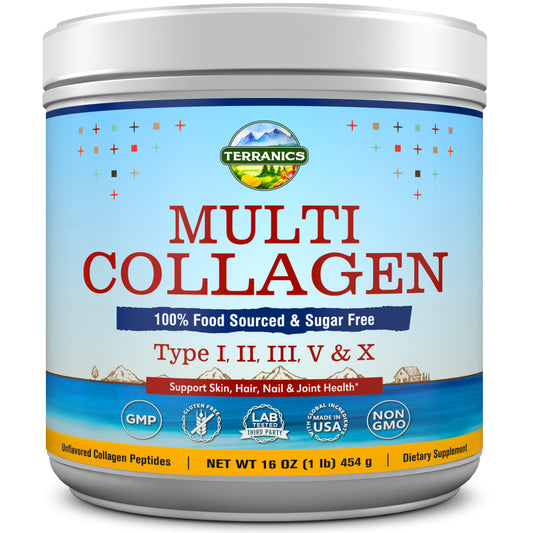
In today's fast-paced world, metabolic disorders have become increasingly prevalent and impactful on our overall well-being. One such condition that has gained significant attention is insulin resistance. Insulin resistance is a metabolic dysfunction that affects millions of people worldwide and is closely associated with various health complications, including type 2 diabetes, obesity, and cardiovascular disease. In this blog, we will delve into the intricacies of insulin resistance, its causes, symptoms, potential complications, and strategies for prevention and management.
What is Insulin Resistance?
Insulin resistance is a complex metabolic condition characterized by the reduced responsiveness of the body's cells to the effects of insulin, a hormone produced by the pancreas. Insulin plays a crucial role in regulating blood sugar levels by facilitating the uptake of glucose from the bloodstream into the cells for energy production or storage. However, when cells become resistant to the action of insulin, glucose uptake is impaired, leading to elevated blood sugar levels, a condition known as hyperglycemia.
Causes and Risk Factors
Insulin resistance is influenced by a combination of genetic, lifestyle, and environmental factors. While genetics may predispose individuals to develop insulin resistance, lifestyle choices play a significant role in its development. Some common causes and risk factors include:
- Obesity: Excess body weight, particularly abdominal fat, is strongly associated with insulin resistance. Adipose tissue secretes hormones and inflammatory substances that interfere with insulin signaling, leading to reduced insulin sensitivity.
- Sedentary Lifestyle: Lack of physical activity and prolonged sitting have been linked to insulin resistance. Regular exercise helps improve insulin sensitivity and glucose utilization by the muscles, enhancing overall metabolic health.
- Unhealthy Diet: Consuming a diet high in processed foods, added sugars, unhealthy fats, and low in fiber can increase the risk of insulin resistance. These dietary habits contribute to weight gain, inflammation, and oxidative stress, further exacerbating insulin resistance.
- Genetics: Family history of insulin resistance or type 2 diabetes can predispose individuals to develop insulin resistance. Certain gene variants affect insulin action and glucose metabolism, making some individuals more susceptible to the condition.
- Ethnicity: Certain ethnicities, such as individuals of South Asian, African, or Hispanic descent, have a higher predisposition to insulin resistance and type 2 diabetes compared to other populations.
Symptoms and Diagnosis

Insulin resistance often develops gradually and may not present noticeable symptoms in its early stages. However, as the condition progresses, some common signs and symptoms associated with insulin resistance and its related conditions include:
- Elevated blood sugar levels: Insulin resistance leads to impaired glucose uptake by cells, resulting in chronically elevated blood sugar levels.
- Increased hunger and cravings: Insulin resistance can disrupt the signals that regulate appetite and satiety, leading to increased hunger and cravings, particularly for sugary and high-carbohydrate foods.
- Fatigue and low energy levels: Inadequate glucose utilization by cells can result in reduced energy production, leading to fatigue and decreased physical and mental performance.
- Difficulty losing weight: Insulin resistance can make it challenging to lose weight or maintain a healthy weight, as the body's ability to efficiently burn fat is compromised.
- Frequent urination: Elevated blood sugar levels can lead to increased urine production, causing frequent urination.
- Darkened skin patches (acanthosis nigricans): Insulin resistance can cause dark, velvety patches of skin, commonly found in body folds such as the neck, armpits, or groin.
To diagnose insulin resistance, healthcare professionals may perform a combination of blood tests, such as fasting blood glucose, oral glucose tolerance test, and fasting insulin levels. These tests help evaluate the body's response to glucose and insulin and determine the severity of insulin resistance.
Complications of Insulin Resistance
If left unmanaged, insulin resistance can lead to several health complications, including:
- Type 2 Diabetes: Insulin resistance is a significant risk factor for the development of type 2 diabetes. When the pancreas can no longer produce enough insulin to compensate for the resistance, blood sugar levels rise, resulting in diabetes.
- Cardiovascular Disease: Insulin resistance is closely associated with an increased risk of cardiovascular diseases such as heart disease and stroke. Elevated blood sugar levels, combined with other metabolic abnormalities, promote the formation of plaque in the arteries, leading to reduced blood flow and increased cardiovascular risk.
- Polycystic Ovary Syndrome (PCOS): Insulin resistance is commonly observed in women with polycystic ovary syndrome, a hormonal disorder characterized by irregular menstrual periods, excessive hair growth, and ovarian cysts.
- Non-Alcoholic Fatty Liver Disease (NAFLD): Insulin resistance can contribute to the accumulation of fat in the liver, leading to non-alcoholic fatty liver disease. NAFLD can progress to more severe conditions, such as liver inflammation (non-alcoholic steatohepatitis) and liver fibrosis.
Prevention and Management
While genetics may predispose some individuals to insulin resistance, making positive lifestyle changes can significantly reduce the risk and manage the condition effectively. Here are some strategies that can help:
- Maintain a Healthy Weight: Losing excess weight, especially abdominal fat, can improve insulin sensitivity. A balanced, nutrient-dense diet and regular exercise are key components of successful weight management. Incorporating whole foods, such as fruits, vegetables, lean proteins, whole grains, and healthy fats, can provide essential nutrients while minimizing processed foods' intake.
- Follow a Balanced Diet: Emphasize a diet rich in fiber, which can help regulate blood sugar levels and improve insulin sensitivity. Include a variety of colorful fruits and vegetables, whole grains, legumes, and lean proteins. Limit the intake of sugary beverages, processed foods, and refined carbohydrates, as they can contribute to insulin resistance and weight gain.
- Regular Physical Activity: Engage in regular physical activity such as aerobic exercises, strength training, and moderate-intensity activities like walking. Exercise helps improve insulin sensitivity and facilitates glucose uptake by the muscles. Aim for at least 150 minutes of moderate-intensity exercise per week, or as advised by your healthcare professional.
- Stress Management: Chronic stress can contribute to insulin resistance. Adopt stress management techniques such as meditation, yoga, deep breathing exercises, or engaging in hobbies to reduce stress levels. Prioritizing self-care and finding activities that promote relaxation can have a positive impact on overall health.
- Get Sufficient Sleep: Lack of sleep or poor sleep quality has been associated with insulin resistance. Aim for seven to nine hours of quality sleep each night. Establish a consistent sleep routine, create a sleep-friendly environment, and limit exposure to electronic devices before bedtime.
- Limit Alcohol Consumption: Excessive alcohol consumption can contribute to insulin resistance and other metabolic disturbances. If you choose to drink alcohol, do so in moderation. Men should limit their intake to no more than two drinks per day, and women should limit their intake to one drink per day.
- Quit Smoking: Smoking is associated with insulin resistance and an increased risk of developing type 2 diabetes. Quitting smoking not only improves insulin sensitivity but also reduces the risk of various other health conditions.
- Regular Health Check-ups: Regularly monitoring your blood sugar levels, blood pressure, and cholesterol levels can help identify any early signs of insulin resistance or related complications. Consult with your healthcare professional to establish an appropriate screening schedule based on your individual risk factors.
- Medical Intervention: In some cases, medication or insulin therapy may be necessary to manage insulin resistance and associated conditions. Medications such as metformin, thiazolidinediones, or insulin sensitizers may be prescribed by a healthcare professional to improve insulin sensitivity and blood sugar control. It is essential to work closely with your healthcare team to develop an individualized treatment plan.
Conclusion
Insulin resistance is a significant health concern that can have far-reaching implications for overall well-being. By understanding its causes, symptoms, potential complications, and management strategies, individuals can take proactive steps to prevent or manage insulin resistance effectively. Adopting a healthy lifestyle that includes regular physical activity, a balanced diet, stress management, and adequate sleep can go a long way in promoting optimal health and reducing the risk of insulin resistance-related complications. Remember, small changes today can lead to substantial benefits in the future. Embracing a holistic approach to health and seeking guidance from healthcare professionals are key to managing insulin resistance and achieving long-term well-being.




